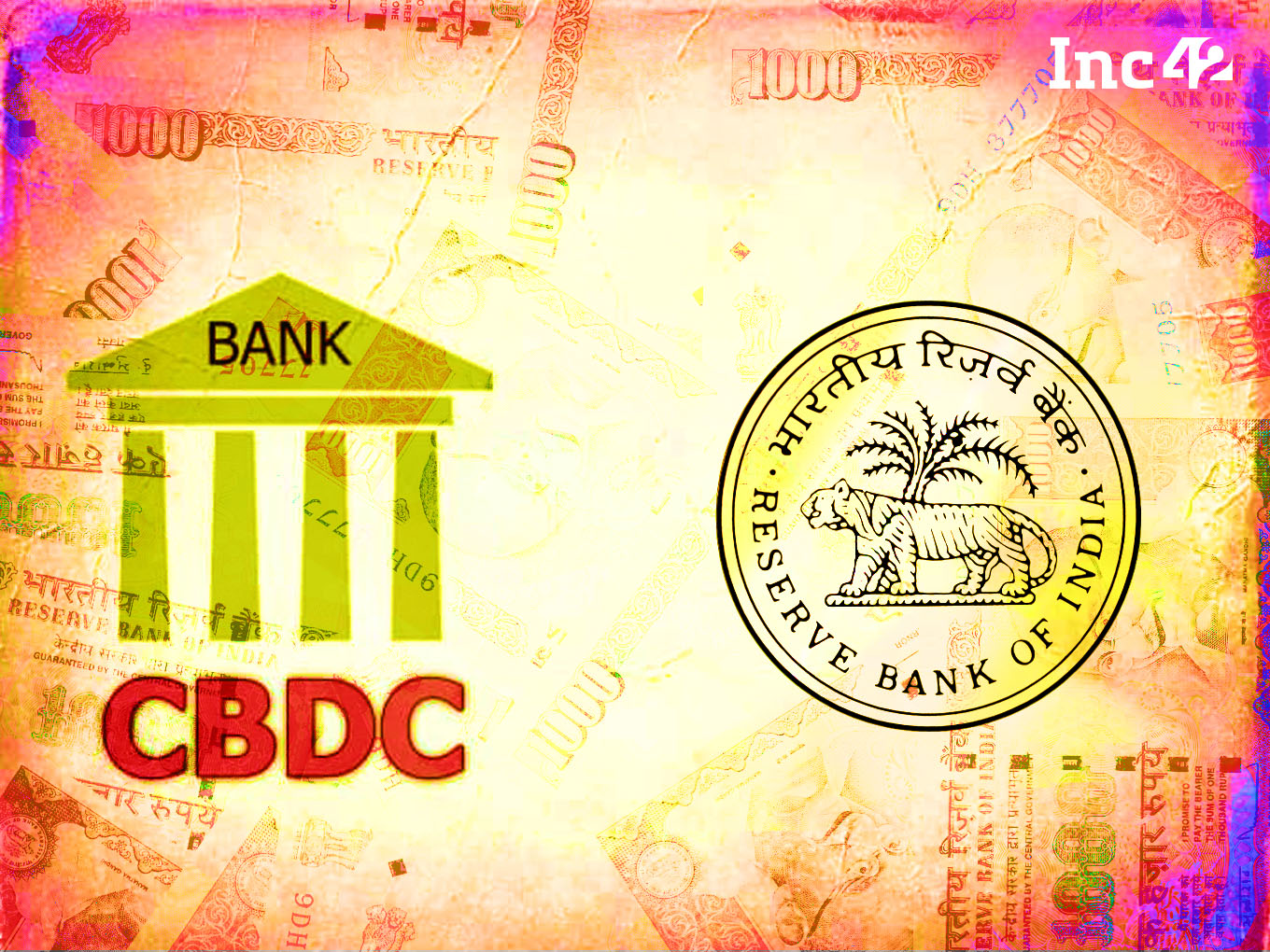SUMMARY
The RBI will be exploring all the possible technology solutions for different applications
A decision regarding a suitable technology solution for the complete launch of CBDC will be taken only after the pilots, an RBI official said
The central bank launched CBDC pilot for the wholesale segment this week, while it would be launching retail pilot in a month
The Reserve Bank of India (RBI), which began the pilot for the central bank digital currency (CBDC) for the wholesale segment earlier this week, will explore all the options for the technology behind the digital rupee (e₹) in its pilots before settling down on the technology to be used for full launch.
“Technology will be only announced after the pilots complete. Different pilots have been planned for different technologies,” an RBI official, who didn’t wish to be named, told Inc42.
Ever since the RBI announced the launch of the pilot for the CBDC, the biggest question on everyone’s mind is if it would deploy a conventional centrally-controlled database or distributed ledger technology (DLT)-based infrastructure or a hybrid infrastructure.
However, the official said that both the technologies will be tested and carefully evaluated for their suitability in accordance with India’s requirements. “We will use multiple technology stacks and whichever works the best will be selected. Some of these pilots may start as late as the first quarter next year,” the official added.
Wholesale And Retail Pilots
The central bank has been exploring the CBDC space since 2017, and finally launched a wholesale CBDC pilot for government securities on November 1. The RBI is now working towards a phased implementation of digital rupee. It has already announced that a pilot for retail CBDC will be launched within a month.
The central bank said that the use case for the wholesale pilot will be settlement of secondary market transactions in government securities. Its use is expected to make the inter-bank market more efficient.
With nine banks in the loop, the current pilot in G-sec is being conducted by the Clearing Corporation of India Ltd on its NDS-OM (Negotiated Dealing System – Order Matching) platform.
Meanwhile, the RBI explained the key differences between the conventional and DLT-based infrastructure in its concept note for CBDC.
In conventional databases, resilience is ensured by storing data over multiple physical nodes which are controlled by one authoritative central entity, i.e., the top node of the hierarchy. On the other hand, in DLT-based systems, the ledger is usually managed jointly by multiple entities in a decentralised manner and each update needs to be harmonised amongst the nodes of all entities without the requirement of a top node. This consensus mechanism requires additional overhead which is the primary reason why DLT enables lower transactions than conventional architectures.
Singapore Launches Wholesale CBDC For Cross-Border Transactions
Meanwhile, more and more central banks are joining the CBDC bandwagon for various use cases. On November 3, the Monetary Authority of Singapore (MAS) launched Ubin+, an expanded collaboration with international partners on cross-border foreign exchange (FX) settlement using wholesale CBDC.
It’s worth noting that with $929 Bn average daily trading volumes (ADTV), Singapore’s foreign exchange is the third largest such centre in the world, after the UK and the US.
On the other hand, India’s northern neighbour China has already entered the advanced phase of its CBDC project. The Chinese eCNY recently hit a new milestone of transactions worth 100 Bn eCNY.
Out of 105 countries that think tank The Atlantic Council has been tracking for CBDC developments, 11 countries, including Nigeria, Jamaica, The Bahamas and eight East Caribbean nations, have launched countrywide CBDCs, while 15 others, including India, China, Saudi Arabia, South Africa, Russia and South Korea, have launched their CBDCs in pilot mode.



























